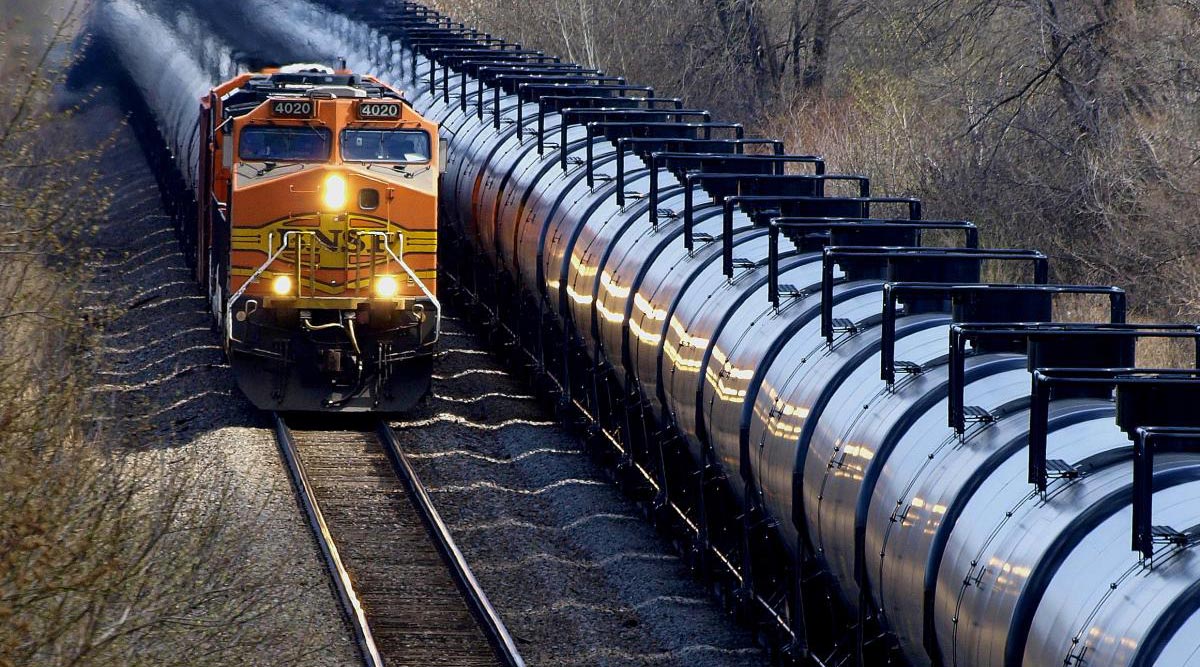New, Safer US Rail Cars Gather Dust Even as Ethanol Trains Grow Longer

While crossing a small wooden bridge in northwestern Iowa on March 16, 20 rail tank cars in a mile-long train transporting ethanol flew off the tracks, sending fireballs into the sky as thousands of gallons of the biofuel leaked into the creek below.
No one was injured, in part because the accident occurred in a sparsely populated area. A similar derailment in the more dense Lac-Mégantic, Quebec, in 2013 killed 47 people after a train carrying crude oil crashed and exploded.
But the incident in Iowa underscores the growing risk of another serious accident along with the increasing volume of the biofuel being moved in unit trains that are a mile long with about 100 railcars — dubbed "rolling pipelines" — to slash freight costs.
That is because ethanol shippers are still primarily using the type of railcars that were deemed too unsafe to carry crude after the Quebec disaster, even though the biofuel is more explosive than oil.
Thousands of replacement cars meant to better withstand an accident are sitting idle in rail yards around the country because the ethanol industry is not required to use them for six more years and they cost about three times as much as the older cars, according to industry sources.
The U.S. Pipeline and Hazardous Material Safety Administration gave the ethanol industry until 2023 to employ cars with thicker shells and other safety features. Before the Iowa incident, PHMSA said it does not see any safety issues with relying on older cars, known as DOT-111s.
"We would like to see the shippers accelerate their schedule to get these legacy DOT-111 tank cars out of service when transporting flammable liquids — specifically crude oil and ethanol,” Robert Sumwalt, member of the U.S. National Transportation Safety Board, an independent federal agency, said at a March 18 press briefing in Iowa after the accident.
The train in the Iowa accident was heading from Green Plains Inc.'s Superior, Iowa, terminal to the Gulf Coast. Green Plains did not comment for this story.
The Renewable Fuels Association, which represents biofuels producers and shippers, said safety is a top priority for the industry and highlighted the rarity of these incidents.
The NTSB has no regulatory authority to change things, Sumwalt said, adding that the power is vested in Congress.
Ethanol production has grown sharply in the past decade, thanks to government rules mandating increased use of the corn-based biofuel to reduce greenhouse-gas emissions. Production is now about 1 million barrels per day.
About 650,000 barrels of ethanol is transported by rail daily. A 2015 report by the Federal Railroad Administration estimated about 47% of ethanol shipments were by unit trains. But several sources interviewed, including four shippers, said their usage is increasing due to cost efficiencies.
"Unit trains have been an increasing transportation efficiency. ...We are encouraged to do more unit trains," Kelly Davis, director of regulatory affairs at the Renewable Fuels Association, said at an NTSB roundtable in summer 2016.
"Shippers want to utilize unit trains if they can to save money,” said Tom Williamson, a broker and owner of Sarasota, Florida-based Transportation Consultants. He said 11 of his 12 clients have switched to unit trains in the past two years.
In the past two years, biofuels makers Archer Daniels Midland Co., of Green Plains, and Eco-Energy Global Biofuels, and terminal operator Kinder Morgan Inc. have planned or built new unit train terminals. Eco-Energy did not respond to requests for comment, but Kinder Morgan declined comment. ADM, in a statement, said it is committed to making needed investments to meet new rail safety standards.
Federal regulators have warned longer trains hauling hazardous materials increase the risk of disasters, particularly when using DOT-111 cars. At least 17 significant ethanol or crude derailments have occurred since 2006, and nearly all involved DOT-111s.
U.S. regulators gave the ethanol industry more time to shift because getting oil producers to stop using older cars was considered more important. A 2014 Federal Railroad Administration study found ethanol cars were 1.5 times more likely to explode than oil.
As of September, 35,252 tank cars were hauling ethanol, and 84% were DOT-111s, according to the latest Association of American Railroads data. Newer DOT-117s account for just 6% of the ethanol fleet.
Based on current lease rates, a shipper using 1,000 of the older cars instead of the new models would save $5.4 million annually.
BNSF Railway Co. has started offering discounts to ethanol shippers this April if they agree to use DOT-117s.
Generally, shippers have stuck with older cars because most railcar owners would hit shippers with financial penalties if they break long-term leases.
“While we are having some success in getting ethanol customers to upgrade to DOT-117s when their leases expire, we are not seeing a lot of demand from customers to make this switch,” said Christopher LaHurd, a spokesman with GATX Corp., a leading U.S. leaser of railcars.
Current lease rates for DOT-111s are about $200 a month, while DOT-117s are around $650 a month, brokers said.
In addition to GATX, Wells Fargo & Co., Bank of America Corp. and Greenbrier Cos. Inc. are among the U.S. fleet owners. Spokesmen for Bank of America and Greenbrier declined comment. A Wells Fargo spokeswoman said the company is working with customers to shift to newer cars.
It would cost about billions of dollars to replace all of the older cars with 117 model cars, Davis said in a phone interview.
"Owners paid $100,000 for these [current] cars, and you're going to melt them down like a tin can to make a new one," Davis said. "That's a lot of stranded capital."

